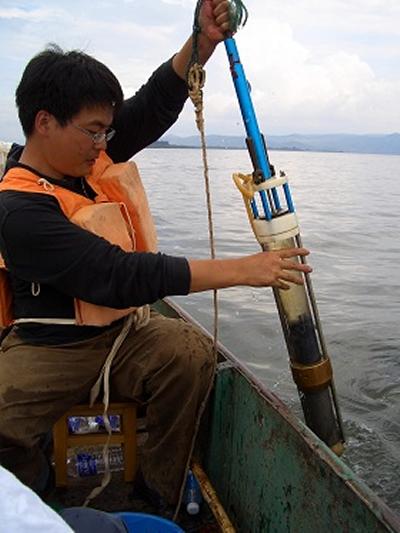SSS Scientists pioneer method to predict environmental collapse

Scientists at the University of Southampton and members of the Sustainability Science at Southampton USRG are pioneering a technique to predict when an ecosystem is likely to collapse, which may also have potential for foretelling crises in agriculture, fisheries or even social systems.
The researchers have applied a mathematical model to a real world situation, the environmental collapse of a lake in China, to help prove a theory which suggests an ecosystem ‘flickers', or fluctuates dramatically between healthy and unhealthy states, shortly before its eventual collapse.
Head of Geography and chair of the Sustainability Science at Southampton USRG at the University of Southampton, Professor John Dearing explains, "We wanted to prove that this ‘flickering' occurs just ahead of a dramatic change in a system - be it a social, ecological or climatic one - and that this method could potentially be used to predict future critical changes in other impacted systems in the world around us."
A team led by Dr Rong Wang extracted core samples from sediment at the bottom of Lake Erhai in Yunnan province, China and charted the levels and variation of fossilised algae (diatoms) over a 125-year period. Analysis of the core sample data showed the algae communities remained relatively stable up until about 30-years before the lake's collapse into a turbid or polluted state. However, the core samples for these last three decades showed much fluctuation, indicating there had been numerous dramatic changes in the types and concentrations of algae present in the water - evidence of the ‘flickering' before the lake's final definitive change of state.
Rong Wang comments, "By using the algae as a measure of the lake's health, we have shown that its eco-system ‘wobbled' before making a critical transition - in this instance, to a turbid state.
"Dramatic swings can be seen in other data, suggesting large external impacts on the lake over a long time period - for example, pollution from fertilisers, sewage from fields and changes in water levels - caused the system to switch back and forth rapidly between alternate states. Eventually, the lake's ecosystem could no longer cope or recover - losing resilience and reaching what is called a ‘tipping point' and collapsing altogether."
The researchers hope the method they have trialled in China could be applied to other regions and landscapes. .
Co-author Dr Pete Langdon comments, "In this case, we used algae as a marker of how the lake's ecosystem was holding-up against external impacts - but who's to say we couldn't use this method in other ways? For example, perhaps we should look for ‘flickering' signals in climate data to try and foretell impending crises?"
The paper, ‘Flickering gives early warning signals of a critical transition to a eutrophic lake state' (Rong Wang, John Dearing, Pete Langdon et al) is published in Nature and can be found at: http://www.nature.com/nature/journal/vaop/ncurrent/full/nature11655.html
For the latest SSS news & events, visit the Sustainability Science at Southampton website: www.southampton.ac.uk/sustainability_science or follow us on Twitter: @SustainScience.
Further details:
- 1) The research was funded through the UK Overseas Research Students Awards Scheme, the Great Britain-China Educational Trust and the University of Southampton. Laboratory analyses and fieldwork were supported by the National Basic Research Program of China (973 program, 2012CB956104).
http://www.gbcc.org.uk/great-britainchina-educational-trust.aspx